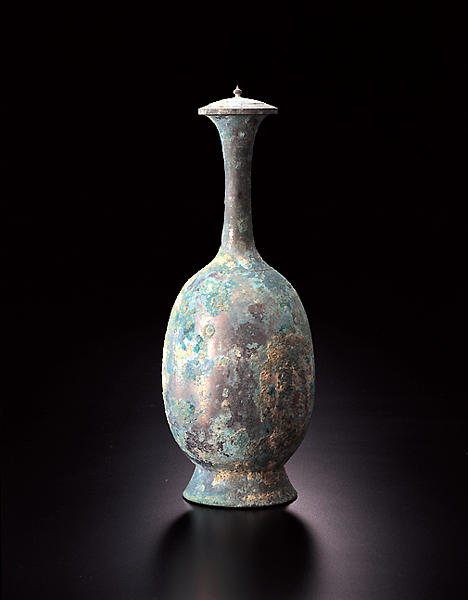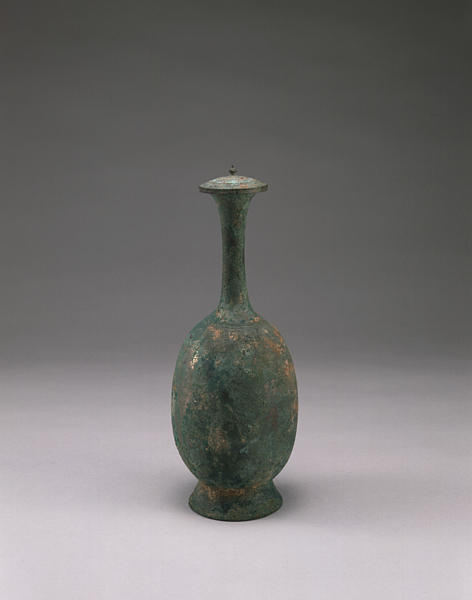王子形水瓶
- 中国
- 中国・六朝時代
- 6c
- 響銅製
- H-22.5 D-8
解説(春の玉手箱)
この水瓶は、インド仏教由来の聖水を入れるための儀器で、現状では厚く緑青に覆われているが,わずかに見える地の部分は響銅(銅に錫を混ぜた合金)で,真鍮色の輝きが残っている。王子形の名は玉子形の玉の点がとれたとするもの,聖徳太子の王子が使用したことから名付けられたとするものなど諸説ある。
この種の水瓶は中国の六朝時代から唐時代にかけて流行し,日本でも中国からの舶載品あるいは国産品と思われるものが法隆寺(現東京国立博物館法隆寺宝物館蔵)に伝わっているが、この水瓶は胴に比べ頸が長めで,しかも中央の括れが強いことなどの特徴が窺われる。蓋の頂の宝珠形のつまみや帯など細部に至るまで緊張感が漲り、凛と立つ姿が格調高い。これとよく似たものが中国河北省平山県の北斉時代の墓から出土しており,六世紀半ば頃の作とみなされる。
Catalogue Entry
This water vase is a ritual vessel used to contain sanctified water that originated in Indian Buddhism. Today, largely covered with a thick blue‐green patina, sections of the original sahari, “bronze that reverberates," bronze alloy can be seen between the patina. The form of this vessel is referred to in Japanese as oji or egg‐shaped because of its resemblance to the egg‐shaped jewel or oji worn by Crown Prince Shotoku. Popular in China from the Six Dynasties period through the Tang and transmitted to Japan, a similar example found at Horyuji (now in the Horyuji Treasure Collection, Tokyo National Museum) is thought to be either an example imported from China or one produced in Japan. The Miho example has a longer neck in proportion to its body than the Horyuji example, and here the neck is strongly constricted in its middle section. The vase has a taut appearance overall, down to the lid fitted with a jewel‐shaped button and finely drawn concentric bands. This imposing form closely resembles that of a vase excavated in a tomb dated to the Northern Qi dynasty and believed to date from the middle of the sixth century.

